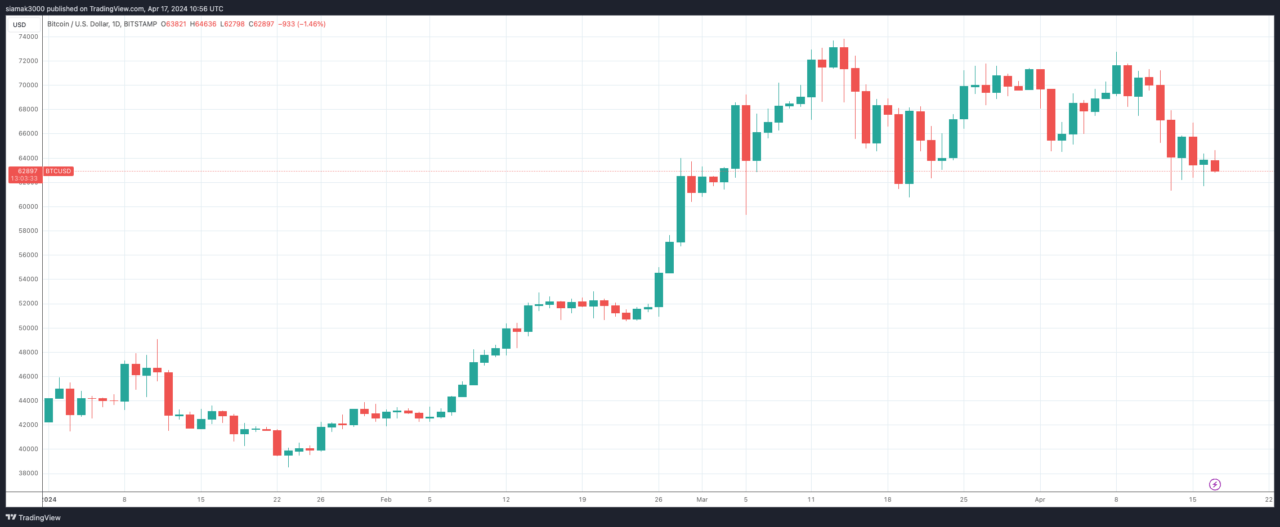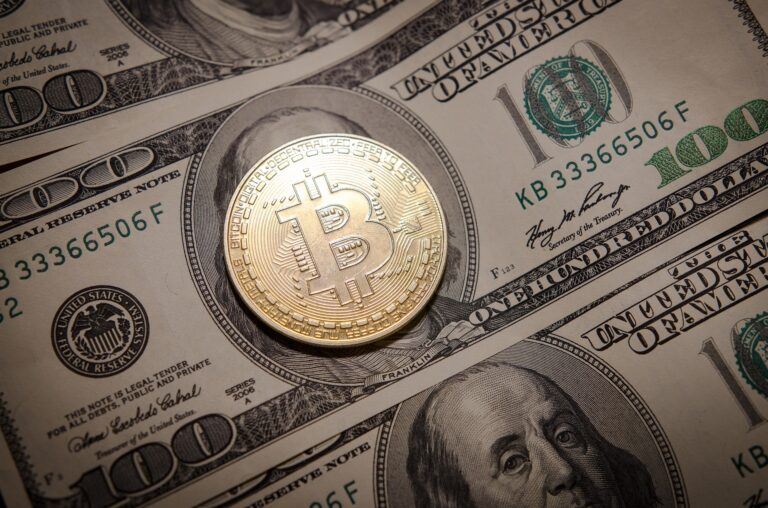As the cryptocurrency world gears up for Bitcoin’s fourth mining reward halving, scheduled to occur in a couple of days (most likely on April 20), the anticipation among Bitcoin enthusiasts is palpable. This significant event will slash the reward for mining Bitcoin blocks from 6.25 BTC to 3.125 BTC, effectively slowing the rate at which new bitcoins are created by half. Historically, such halvings have been catalysts for prolonged price increases in Bitcoin’s value, sparking optimism among investors that the upcoming halving will follow suit.
However, according to an article by CoinDesk published earlier today, Goldman Sachs has issued a note urging caution. The investment giant’s Fixed Income, Currencies and Commodities (FICC), and Equities teams highlight that while prior halvings have indeed led to price surges, the timelines and magnitudes of these rallies varied substantially. They stress the importance of considering the unique macroeconomic conditions surrounding each event rather than assuming past trends will automatically repeat.
The current economic environment differs markedly from those that coincided with previous halvings. Previously, conditions such as low to zero interest rates and expansive monetary policies from major central banks—including the U.S. Federal Reserve, the European Central Bank, the Bank of Japan, and the People’s Bank of China—encouraged risk-taking in various asset classes, including cryptocurrencies. These conditions were conducive to the bullish phases that followed earlier halvings.
In stark contrast, today’s economic landscape is characterized by high inflation and interest rates above 5% in the United States, which dampen the speculative enthusiasm that typically benefits risk-on assets, such as tech stocks and crypto. Goldman points out that the current high-interest rate environment and the market’s adjustment to lower expectations for rate cuts this year create a less favorable backdrop for a post-halving surge in Bitcoin prices.
Despite these cautionary indicators, the Bitcoin price has already gone up 50% in the year-to-date period, and a new all-time high of $73,737 was recorded on 14 March 2024, i.e. more than a month before the halving date.

This rally has been driven largely by substantial inflows into U.S.-based spot exchange-traded funds (ETFs) launched in January. According to Bloomberg, these funds have accumulated over $59 billion in assets under management in the past three months. The CoinDesk article says that some analysts believe this rapid accumulation has led to a supply-demand imbalance that might have pulled forward much of the post-halving price increase typically expected, and they now speculate that the immediate aftermath of the halving could witness a “sell-the-fact” reaction, where prices might actually drop following the event.
According to Goldman Sachs, while the halving serves as a psychological reminder of Bitcoin’s limited supply, its immediate impact on Bitcoin’s price may be overshadowed by broader market dynamics and the ongoing demand for the US-listed spot Bitcoin ETFs. The team suggests that these factors will continue to be the primary drivers of Bitcoin’s price in the medium term:
“Whether BTC halving will next week turn out to be a “buy the rumour, sell the news event” is arguably less impactful on BTC’s medium term outlook, as BTC price performance will likely continue to be driven by the said supply-demand dynamic and continued demand for BTC ETFs, which combined with the self-reflexive nature of crypto markets is the primary determinant for spot price action.“
In an interview on Bloomberg TV on April 15, 2024, Kris Marszalek, CEO of Crypto.com, offered his insights into the cryptocurrency landscape, especially with the impending Bitcoin halving event on the horizon. Conducted by Haslinda Amin, Bloomberg’s Chief International Correspondent for Southeast Asia, the discussion also delved into Crypto.com’s strategies for market adaptation, navigating regulatory changes, and their plans for expansion.
Marszalek applauded the regulatory shifts in Hong Kong, particularly the conditional approval of Bitcoin and Ethereum spot ETFs, viewing them as significant positive strides. He drew comparisons between the market dynamics in Hong Kong and South Korea, pointing out the robust retail interest in cryptocurrencies in Korea, despite the hurdles that foreign entities often encounter there. As part of its expansion efforts, Crypto.com is set to launch its app in Korea, aiming to carve out a strong presence in one of the globe’s foremost crypto markets.
Addressing the anticipated Bitcoin halving, Marszalek remarked:
“As we near the halving date, we might see some selling based on the ‘buy the rumor, sell the news’ sentiment.“
He expressed optimism about the market’s prospects following the halving, citing the expected reduction in Bitcoin supply and sustained interest from institutional investors:
“Looking at the six months after the Bitcoin halving, I foresee significant market activity. It’s not something that will show its impact in a day or even a week, but over six months, it’ll likely have a profound effect. I see this as an overwhelmingly positive development for the market.“
Nevertheless, Marszalek recognized the broader global financial forces at play, suggesting that the crypto market might enter a consolidation phase akin to previous cycles.
Featured Image via Pixabay









